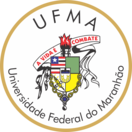| Compartilhamento |


|
Use este identificador para citar ou linkar para este item:
https://tedebc.ufma.br/jspui/handle/tede/6418| Tipo do documento: | Dissertação |
| Título: | Avaliação do microbioma, fermentação, composição química, estabilidade aeróbia de silagens de sorgo e de ração total aditivadas com aditivos químico e microbianos |
| Título(s) alternativo(s): | Evaluation of the microbiome, fermentation, chemical composition, and aerobic stability of sorghum silages and total rations supplemented with chemical and microbial additives |
| Autor: | RODRIGUES, Luana Milena Pinheiro  |
| Primeiro orientador: | ZANINE, Anderson de Moura |
| Primeiro coorientador: | MACÊDO, Alberto Jefferson da Silva |
| Segundo coorientador: | FERREIRA, Daniele de Jesus |
| Primeiro membro da banca: | ZANINE, Anderson de Moura |
| Segundo membro da banca: | FERREIRA, Daniele de Jesus |
| Terceiro membro da banca: | SANTOS, Edson Mauro |
| Quarto membro da banca: | RODRIGUES, Arlan Araújo |
| Quinto membro da banca: | LEMOS, Mateus Lacerda Pereira |
| Resumo: | A variabilidade climática impõe desafios para o crescimento do pasto no Brasil, impactando diretamente a alimentação dos rebanhos, e a ensilagem se destaca como uma estratégia eficaz para conservar as forragens, mantendo seu valor nutritivo e garantindo a disponibilidade de alimento durante períodos de escassez. O primeiro experimento teve como objetivo investigar os efeitos da inoculação com Lentilactobacillus buchneri (Lb) isoladamente, ou em combinação com Lentilactobacillus hilgardii (Lh) sobre o perfil fermentativo, a sucessão bacteriana e fúngica, a composição química, perdas de matéria seca e estabilidade aeróbia das silagens do sorgo planta inteira, ensiladas durante 20, 60 e 100 dias. O delineamento experimental foi inteiramente casualizado, arranjado em esquema fatorial 3×3, com três períodos de fermentação (20, 60 e 100 dias após ensilagem) e três aditivos microbianos (Controle, não inoculado; inoculante comercial à base de Lb, e outro inoculante comercial, composto por Lh com Lb), com cinco repetições por tratamento. As variáveis avaliadas foram perfil fermentativo, composição química, quantificação das populações microbianas, ácidos orgânicos e perdas de matéria seca. A estabilidade aeróbia foi monitorada por meio de data-loggers, enquanto a diversidade microbiana foi caracterizada por sequenciamento do gene 16S rRNA, utilizando a plataforma QIIME2. Observou-se interação significativa (P<0,05) entre os aditivos e o período fermentativo para as variáveis pH, carboidratos solúveis, nitrogênio amoniacal, matéria seca, proteína bruta, bactérias ácido-láticas, ácidos orgânicos e estabilidade aeróbia. A diversidade beta mostrou maior EA nas comunidades bacterianas dos grupos inoculados, enquanto o grupo controle teve maior dispersão e aumento de táxons indesejáveis. Lentilactobacillus dominou nos grupos inoculados, e Kazachstania foi o principal táxon fúngico. A inoculação com Lb isolado e combinado com Lh promoveu maior desenvolvimento da população de bactérias ácido-láticas e produziu compostos antifúngicos. Portanto, recomenda-se a inoculação com Lb ou Lb+Lh e o período de fermentação de 60 a 100 dias para otimizar a EA. No segundo experimento, objetivou-se avaliar o perfil fermentativo, as perdas de matéria seca, a composição química e a estabilidade aeróbia de silagens de ração em mistura total à base de sorgo forrageiro aditivadas com doses de FreshCUT Plus™ aos 40 e 80 dias após a ensilagem. O delineamento experimental foi inteiramente casualizado, utilizando dois períodos de fermentação, três aditivos e cinco repetições por tratamento, em esquema fatorial 2×3. Os aditivos empregados foram: ração em mistura total controle, sem aditivo; ração em mistura total aditivada com 1 kg FreshCUT Plus™/Mg base MN; ração em mistura total aditivada com 2 kg FreshCUT Plus™/Mg base MN. Observou-se interação significativa (P<0,05) entre o aditivo e o período fermentativo para extrato etéreo, pH, carboidratos solúveis, ácidos orgânicos e estabilidade aeróbia. Aos 80 dias, as silagens com 2 kg FreshCUT Plus™ eliminaram populações microbianas indesejáveis, apresentando maiores concentrações de ácido lático e acético, melhor estabilidade aeróbia e menores temperaturas, sem alterações significativas de matéria seca. Com base nos resultados, recomenda-se a adição de 2 kg FreshCUT Plus™/Mg e um período de fermentação de 80 dias para otimizar a qualidade da silagem de ração em mistura total.___The climatic variability poses challenges for pasture growth in Brazil, directly impacting livestock feeding, and silage stands out as an effective strategy for conserving forages, maintaining their nutritional value and ensuring the availability of food during periods of scarcity. The first experiment aimed to investigate the effects of inoculation with Lentilactobacillus buchneri (Lb) alone or in combination with Lentilactobacillus hilgardii (Lh) on the fermentation profile, bacterial and fungal succession, chemical composition, dry matter losses, and aerobic stability of whole-plant sorghum silages ensiled for 20, 60 and 100 days. The experimental design was fully randomized, arranged in a 3×3 factorial scheme, with three microbial additives (Control, non inoculated; commercial Lb-based inoculant; and another commercial inoculant composed of Lh with Lb), with five repetitions per treatment. The evaluated variables were fermentation profile, chemical composition, microbial population quantification, organic acids, and dry matter losses. Aerobic stability was monitored using data loggers, while microbial diversity was characterized by 16S rRNA gene sequencing, using the QIIME2 platform. Significant interaction (P<0,05) was observed between the additives and the fermentation period for the variables pH, soluble carbohydrates, ammoniacal nitrogen, dry matter, crude protein, lactic acid bacteria, acids, and aerobic stability. Beta diversity showed higher aerobic stability in the bacterial communities of the inoculated groups, while the control group exhibited greater dispersion and an increase in undesirable taxa. Lentilactobacillus dominated the inoculated groups, and Kazachstania was the main fungal taxon. Inoculation with Lb alone and in combination with Lh promoted greater development of lactic acid bacteria and produced antifungal compounds. Therefore, inoculation with Lb or Lb+Lh and a fermentation period of 60 to 100 days are recommended to optimize aerobic stability. In the second experiment, the aim was to evaluate the fermentation profile, dry matter losses, chemical composition, and aerobic stability of total mixed ration silages based on forage sorghum, treated with doses of FreshCUT Plus™ at 40- and 80-days post-ensiling. The experimental design was fully randomized, using two fermentation periods, three additives, and five repetitions per treatment, organized in a 2×3 factorial scheme. The additives used were: control total mixed ration, without additive; total mixed ration with 1 kg FreshCUT Plus™/Mg of dry matter. A significant interaction (P<0,05) was observed between the additive and fermentation period for ether extract, pH, soluble carbohydrates, organic acids, and aerobic stability. At 80 days, the silages with 2 kg FreshCUT Plus™ eliminated undesirable microbial populations, presenting higher concentrations of lactic and acetic acids, better aerobic stability, and lower temperatures, without significant changes in dry matter. Based on the results, it is recommended to add 2 kg FreshCUT Plus™/Mg and a fermentation period of 80 days to optimize silage quality. |
| Abstract: | The climatic variability poses challenges for pasture growth in Brazil, directly impacting livestock feeding, and silage stands out as an effective strategy for conserving forages, maintaining their nutritional value and ensuring the availability of food during periods of scarcity. The first experiment aimed to investigate the effects of inoculation with Lentilactobacillus buchneri (Lb) alone or in combination with Lentilactobacillus hilgardii (Lh) on the fermentation profile, bacterial and fungal succession, chemical composition, dry matter losses, and aerobic stability of whole-plant sorghum silages ensiled for 20, 60 and 100 days. The experimental design was fully randomized, arranged in a 3×3 factorial scheme, with three microbial additives (Control, non inoculated; commercial Lb-based inoculant; and another commercial inoculant composed of Lh with Lb), with five repetitions per treatment. The evaluated variables were fermentation profile, chemical composition, microbial population quantification, organic acids, and dry matter losses. Aerobic stability was monitored using data loggers, while microbial diversity was characterized by 16S rRNA gene sequencing, using the QIIME2 platform. Significant interaction (P<0,05) was observed between the additives and the fermentation period for the variables pH, soluble carbohydrates, ammoniacal nitrogen, dry matter, crude protein, lactic acid bacteria, acids, and aerobic stability. Beta diversity showed higher aerobic stability in the bacterial communities of the inoculated groups, while the control group exhibited greater dispersion and an increase in undesirable taxa. Lentilactobacillus dominated the inoculated groups, and Kazachstania was the main fungal taxon. Inoculation with Lb alone and in combination with Lh promoted greater development of lactic acid bacteria and produced antifungal compounds. Therefore, inoculation with Lb or Lb+Lh and a fermentation period of 60 to 100 days are recommended to optimize aerobic stability. In the second experiment, the aim was to evaluate the fermentation profile, dry matter losses, chemical composition, and aerobic stability of total mixed ration silages based on forage sorghum, treated with doses of FreshCUT Plus™ at 40- and 80-days post-ensiling. The experimental design was fully randomized, using two fermentation periods, three additives, and five repetitions per treatment, organized in a 2×3 factorial scheme. The additives used were: control total mixed ration, without additive; total mixed ration with 1 kg FreshCUT Plus™/Mg of dry matter. A significant interaction (P<0,05) was observed between the additive and fermentation period for ether extract, pH, soluble carbohydrates, organic acids, and aerobic stability. At 80 days, the silages with 2 kg FreshCUT Plus™ eliminated undesirable microbial populations, presenting higher concentrations of lactic and acetic acids, better aerobic stability, and lower temperatures, without significant changes in dry matter. Based on the results, it is recommended to add 2 kg FreshCUT Plus™/Mg and a fermentation period of 80 days to optimize silage quality. |
| Palavras-chave: | estacionalidade climática; fermentação; microbiota; metataxonômica; climatic seasonality; fermentation; microbiota; metataxonomic. |
| Área(s) do CNPq: | Zootecnia |
| Idioma: | por |
| País: | Brasil |
| Instituição: | Universidade Federal do Maranhão |
| Sigla da instituição: | UFMA |
| Departamento: | DEPARTAMENTO DE CIÊNCIAS AGRÁRIAS E AMBIENTAIS - DCAA |
| Programa: | PROGRAMA DE PÓS-GRADUAÇÃO EM CIÊNCIA ANIMAL (25.06)/CCAA |
| Citação: | RODRIGUES, Luana Milena Pinheiro. Avaliação do microbioma, fermentação, composição química, estabilidade aeróbia de silagens de sorgo e de ração total aditivadas com aditivos químico e microbianos. 2025. 106 f.. Dissertação (Programa de Pós-Graduação em Ciência Animal (25.06)/CCAA) - Universidade Federal do Maranhão, Chapadinha, 2025 |
| Tipo de acesso: | Acesso Aberto |
| URI: | https://tedebc.ufma.br/jspui/handle/tede/6418 |
| Data de defesa: | 30-Jun-2025 |
| Aparece nas coleções: | DISSERTAÇÃO DE MESTRADO - PROGRAMA DE PÓS-GRADUAÇÃO EM CIÊNCIA ANIMAL |
Arquivos associados a este item:
| Arquivo | Descrição | Tamanho | Formato | |
|---|---|---|---|---|
| LUANA_MILENA_PINHEIRO_RODRIGUES_DISSERTACAO.pdf | 2,65 MB | Adobe PDF | Baixar/Abrir Pré-Visualizar |
Os itens no repositório estão protegidos por copyright, com todos os direitos reservados, salvo quando é indicado o contrário.




